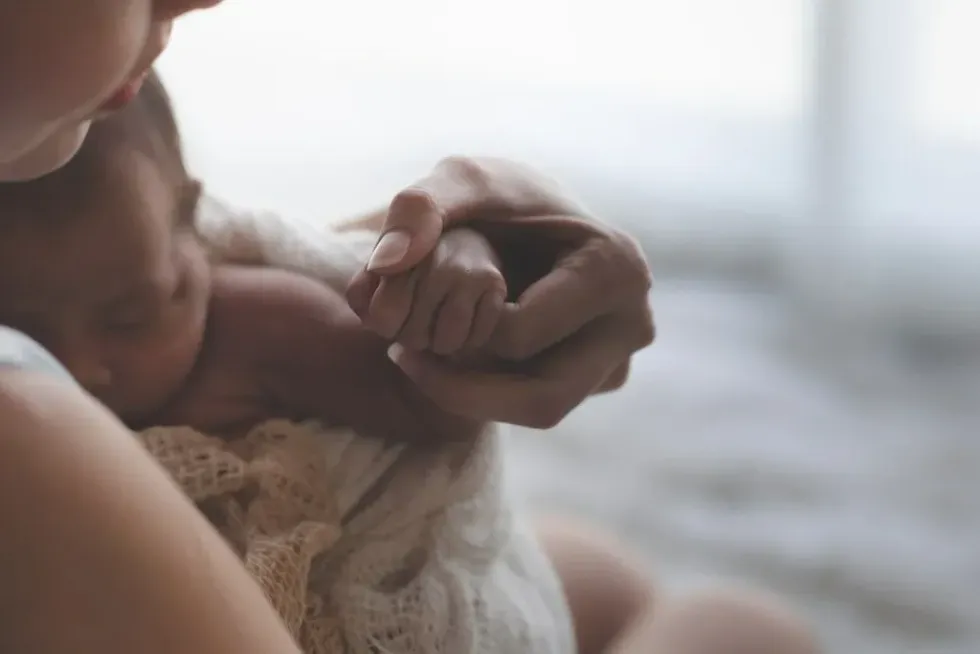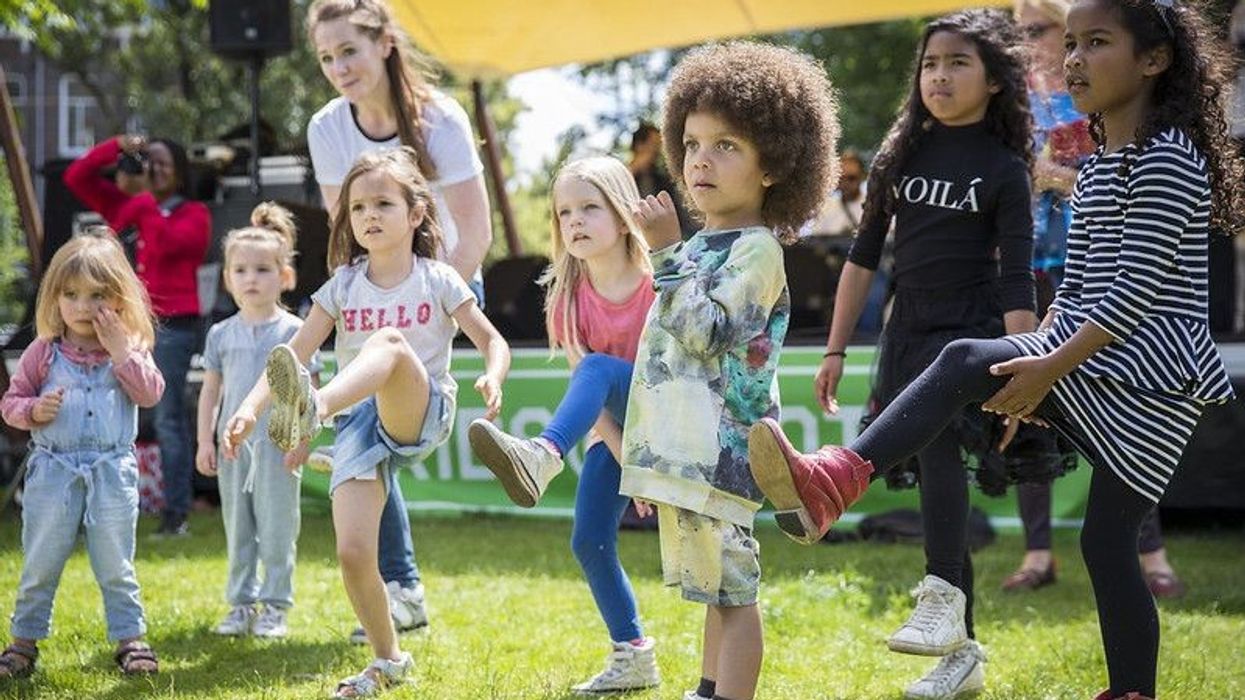Image © x-reflexnaja via iStock.
Considering a water birth? Spending some time in a birthing pool has been shown to relax mothers during labour, and can reduce pain in childbirth.
No wonder then that so many mums-to-be are interested in the possibility of giving birth in the water - according to the NCT, 10% of women give birth in the pool, while 20% use water at some stage of labour.
Numerous hospitals around the country offer pools on wards, so labouring and giving birth in a pool is increasing in popularity, even for those who don't want to have a home birth.
It's not quite as relaxing as a dip in an actual pool... but it is rather lovely (I've done it four times myself). Here's what you need to know - and what you need to wear. For more on what to wear during labour, check out our top tips here.

Do Water Births Hurt Less?
We get it: every mum-to-be is looking for the least-painful, least-unpleasant, childbirth experience possible. Unfortunately, having a water birth won't necessarily hurt less than having a baby on your hospital bed or opting for an epidural.
However, there are numerous studies to show that being in the water can promote relaxation, helping to lower blood pressure and even improving the efficiency of contractions as well as blood and oxygen flow to the baby. Research has also found that immersing yourself in water can shorten the length of labour.
Another bonus? Water births may help to reduce tearing while giving birth.
Can You Use A Birthing Pool If Your Waters Have Broken?
Yes, you can use a pool if your waters have broken. Since labour typically tends to intensify once the amniotic sac has ruptured, you might find you're more comfortable in the pool (you'll also be leaking fluid).
However, you won't be able to labour in the water unless your waters are clear - if there is any meconium (baby poop) when your waters break, or any blood, it's unlikely that you'll be able to use the pool.

Image © ideabug via iStock
What Pain Relief Can I Have?
While immersing yourself in warm water during labour is itself considered pain relief, you can also use gas and air (Entonox) to help with contractions, as well as taking a mild painkiller like paracetamol. For some women, sniffing aromatherapy oils while in the pool can also help, as can massage and breathing techniques.
If you need something stronger, like an epidural, you will need to get out of the pool. Pethidine can make you drowsy and takes a couple of hours to wear off, so you should wait until the drowsiness passes ahead of climbing in the pool.
TENS machines can be used to help with contractions before you get into the pool but not in the water.
What To Wear In A Birthing Pool
Depending on the length of your labour, you may find you're in and out of the pool throughout, or you might decide to use the pool when you're in the final stages and ready to push the baby out (just be sure to alert the midwife to the fact you'll want to use the pool at some stage when you arrive in hospital, so they can ensure there's a free one and get the water at the right temperature).
You'll want a few different clothing options in your hospital bag to ensure that you feel comfortable at all stages. While you don't need to put on a top to labour in water, many women prefer to have something on their upper bodies, especially in the busy hospital environment.
You have a range of options, like a bikini top, tankini top, sports bra or maternity/nursing bra.
Bonus: you don't need to pack the bikini bottoms to have your baby in comfort in the water. In fact, trying to wiggle in and out of bikini bottoms will be a pain, so we'd recommend avoiding them entirely.
A bikini top is generally considered the favourite amongst mothers who have given birth in the water or laboured in the pool - we'd recommend that you get a maternity bikini top to ensure you're comfortable on the day.
Most brands with maternity ranges will cover maternity swimwear as well: try ASOS, Seraphine, Lily & Ribbon, Gap and JoJo Maman Bebe for a range of bikini and tankini styles.
If you prefer to be a bit more covered, a vest top or cotton T-shirt also works well in the pool. Some women like to wear long-sleeves in the pool - a cotton top or pyjama top should do the job.
It is worth remembering that you will be immersed in 37-degree water, and a T-shirt or long-sleeved top will get completely soaked.

Image © FotoDuets via iStock
What Else Should I Pack?
We'd also recommend packing plenty of layers in your hospital bag, as you may find your temperature fluctuates throughout the process (also, you're likely to be moving from the hospital room to the pool room, as well as pacing the hallway, so you want to make sure you have warmer tops - an oversized cardigan, a sweatshirt - as well as bikini tops for wearing in the birth pool.
A robe is another smart idea for the hospital bag, that not only keeps you covered as you walk around but also will provide a feeling of home when you're in the hospital for that initial stretch after the baby has arrived.
If you're having an induction, you'll be able to arrive at the hospital in your comfiest clothes. Depending on the method they use to induce you (whether it's because you've gone significantly over your due date, or for any other reason), you might not be eligible to have a water birth.
Those who are classed as "high risk" won't be able to have water births, either.
Your hospital bag should include a range of items you'll be comfortable wearing post-birth - since you don't know how long you'll be in hospital for, it's wise to pack a selection of clothing.
Comfortable bottoms like yoga pants, leggings or sweatpants can help you feel cosy, and you'll also want several pairs of underpants which you're likely to be changing regularly (don't forget a couple of packs of maternity pads to help absorb the blood loss).
Note: this isn't the moment to pack those lacy thongs or high-cut briefs - the more full-coverage and granny-style the pants, the better.
Some women even opt for disposable knickers during the first couple of weeks.
Loose pyjamas can be worn for sleep or to lounge around in during the day, and don't forget about footwear: slipper socks with grips and cosy slippers will make it easier to move around the hospital after giving birth. Walking around can help aid your postpartum recovery, as well as preventing blood clots.
Cotton tees (the looser the better, so you can easily pull them down or up to feed) and maternity dresses are also worth packing, since the aim of the game when it comes to your post-birth wardrobe is comfort.
Nursing tops - either the lift-up options or the ones where you unbuckle the straps - are incredibly handy for the frequent feeds newborns require, as are nursing bras, which you'll also be changing regularly.
Nursing pads can help absorb any excess milk - and minimise the staining of your tops - and we'd also recommend that you get a few accessories for your hospital bag, like wireless headphones (a soundtrack of your favourite tunes can really help relax labouring mums), as well as your favourite essential oils.











